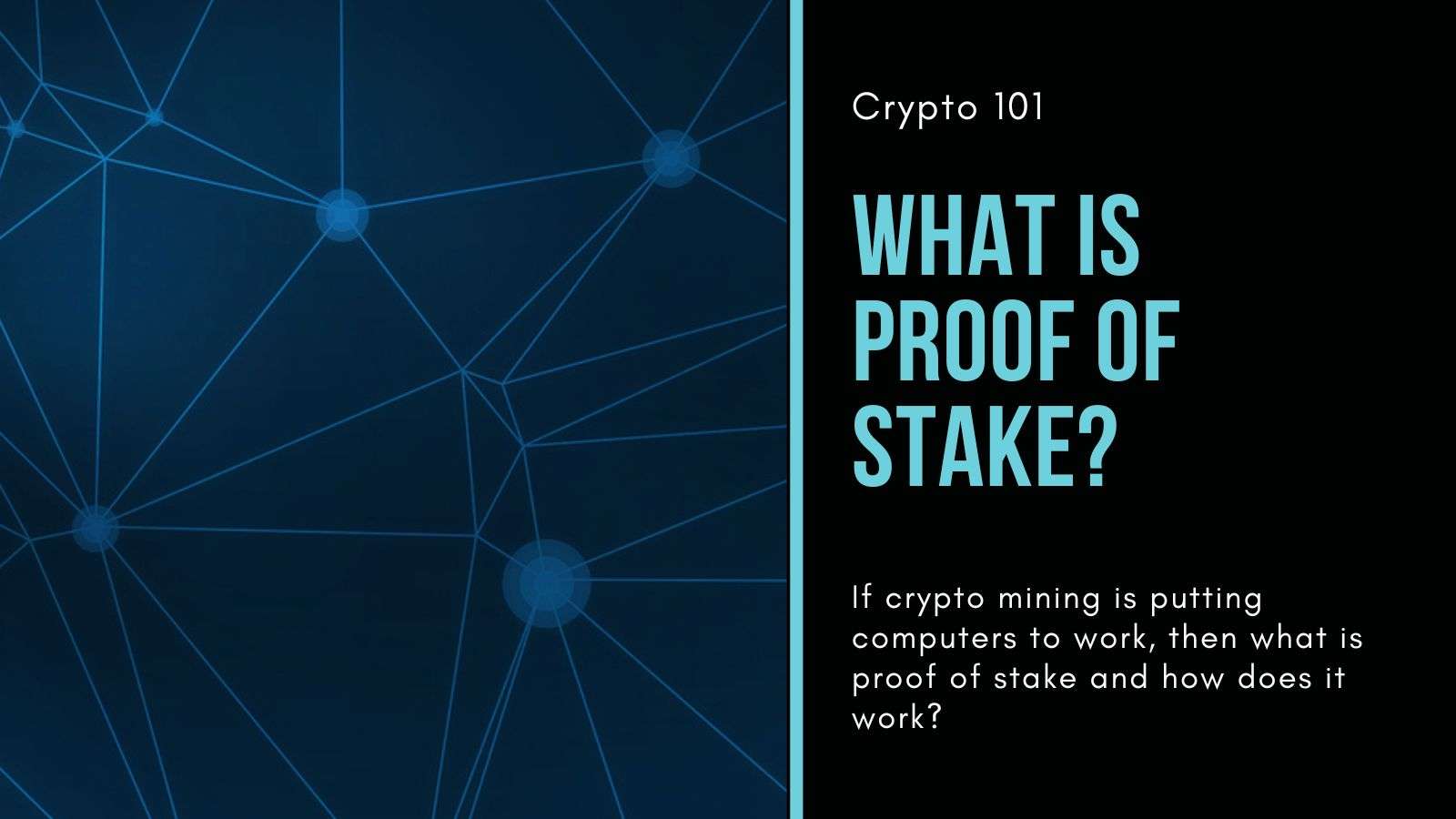Crypto 101- What Is Proof of Stake?

In the last article on Proof of Work, I discussed what crypto mining is and how it works. This time we’ll explore what Proof of Stake is, how it works, and its comparison with Delegated Proof of Stake (DPoS). I’ll also touch upon the distinctions between PoS and PoW, as well as some of the challenges associated with the Proof of Stake mechanism that is argued all over the ecosystem.
What is Proof of Stake?
Proof of Stake is a consensus mechanism used in blockchain networks to achieve agreement on the state of the ledger similar to Proof of Work. But, unlike Proof of Work, which relies on electric hungry computers solving complex mathematical puzzles to validate transactions and create new blocks, Proof of Stake validators are chosen to create new blocks based on the amount of cryptocurrency they hold and are willing to “stake” as collateral.
In a Proof of Stake system, validators are selected to create new blocks and validate transactions based on their stake in the network. The more cryptocurrency a validator stakes, the higher the probability they have of being chosen to create the next block. This process is often referred to as “forging” or “minting” new coins.

Delegated Proof of Stake (DPoS)
Delegated Proof of Stake is a variation of the Proof of Stake consensus mechanism where token holders vote for a select group of delegates who are responsible for validating transactions and creating new blocks. DPoS aims to increase scalability and efficiency by delegating the consensus process to a smaller number of trusted entities.
In a DPoS system, the validator are voted on similar to a politician and have a larger say in the network governance because not only of their own stake, but the other stake delegated to them by other users of the network. The validators in this case usually run nodes on servers that run the blockchain and make the transactions, similar to a miner.
However, one major issue is that it is easy to spin up a virtual private server to run these instead of hosting a server. This create a central point of failure if many of the validators all use the same server farm like AWS, Hetzner, or others. Many of these services actually have terms and conditions against blockchain and cryptocurrency activities, so many times, the validators are going against policy and could be kicked off the farm.
Proof of Stake vs. Proof of Work
Proof of Stake differs from Proof of Work primarily in the way new blocks are created and transactions are validated. PoW requires miners to perform computationally intensive tasks, consuming significant amounts of energy, although many miners are making use of alternative energy in their mining efforts, whereas PoS validators are chosen to create new blocks based on their stake in the network, which consumes far less energy, but opens up issues with centralization which I will get into next.
Centralization Challenges in Proof of Stake
One of the issues against Proof of Stake is its potential for centralization. In many PoS ecosystems, validators with a significant amount of cryptocurrency have more influence over the consensus process, leading to concerns about centralization and oligarchy. Just look at the current situation with Ethereum. This concentration of power among a few stakeholders can undermine the decentralization principles that cryptocurrencies aim to uphold.
These centralization issues can be fixed if people would worry more about network security and decentralization versus how much yield they are going to make staking with one validator over another. In most Proof of Stake or DPoS ecosystems, the bulk of the stake tends to get centralized in the top few players. This can be more destructive than constructive if those few validators get together and decided to do something bad to the network because they have voting control over such large amounts of the network stake.
This same thing can be said about the centralization of mining pools on Proof of Work networks. The best thing is to run your own nodes, miners, and staking wallets if at all possible so that you can make sure you are doing your part to help with the decentralization of these networks. So if you are involved in any blockchain network, make sure you research the different consensus mechanisms and ensure you are doing your part to help further decentralize and secure these networks. After all, the whole thesis behind the cryptocurrency industry is being our own bank!
Donate crypto today and help support or efforts here at Coin Logic!

Tip BTC to the following address
bc1q40lxx5uvev63g07z4w0kqfyknayhl2et74cth6

Tip BCH to the following address
qrspq757vq7dvlzlk6dft85j5ha2pvreeurmpt8lej

Tip XMR to the following address
47zfXjdizaw7bPsAQvMFc61TA1BAKf6m2PExhdTnAysc4bXx9NEsmCQ9JHXheiVkKKTUQSFN7GweDKk7YBjMjXdg6FD178t

Tip LTC to the following address
LaTcwYTebM74xWYARrnrWPJYgj11EzM44d

Tip with ETH, BNB, MATIC, or any ERC-20 | BEP-20 token
0x4DBD3A79aa07aF3ac4c83D386e231C0Efe3893D6

Tip Hive, HBD, or any Hive Engine token to the following Hive account
@coinlogic.online
